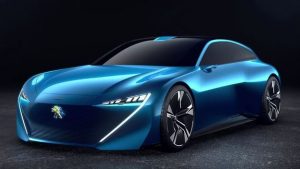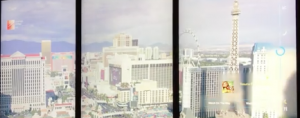The Responsive Car: Peugeot Instinct Concept
 Not futuristic in terms of the design. Not too special compared to Tesla (big tablet in the middle, holographic head-up display, plug-in hybrid engine, and so on). Still, it is a smart car with a very much clean and intuitive layout. Peugeot unveiled their latest car study at Mobile World Congress last week, called Instinct concept.
Not futuristic in terms of the design. Not too special compared to Tesla (big tablet in the middle, holographic head-up display, plug-in hybrid engine, and so on). Still, it is a smart car with a very much clean and intuitive layout. Peugeot unveiled their latest car study at Mobile World Congress last week, called Instinct concept.
That the trend of all car manufacturers is heading towards smart connected cars is no secret any longer. However, the Peugeot approach seems like a vision probably many people cannot envision yet. Autonomous, intelligent, self-driving cars that talk to all of your other devices and can even detect in which state of fitness you are sounds like a far too futuristic project these days.
“In the future, maybe you will have cars that can be only autonomous, and it will be forbidden to drive anymore. But this transition will be very long, and what we wanted to illustrate here is part of this transition, because this will take time.” Matthias Hossann, Head of Concept Car and Advanced Design, Peugeot
Peugeot foresees a future where the drivers can choose how much control they want to give to the car. The concept offers two self-driving modes and two active modes. The car shall even be able to adjust its driving based on data analysis that it gets from connected devices like smartphones or tablets. The car technology will be based on the Samsung Artik IoT platform. As an example, the car manufacturers mentioned that if someone has been on a hard workout, the smartphone tells the car automatically to shift into an “autonomous soft” mode to let the driver relax. Sounds like a responsive car, right?
“This is a bridge, and it’s something that we would like to push for the future. That’s why we didn’t create something that looks like a UFO”, states Hossann.
The official debut shall be at the Geneva Motor Show next month. However, even Peugeot sees that the technology of the car won’t be available until 2025 at the earliest.











